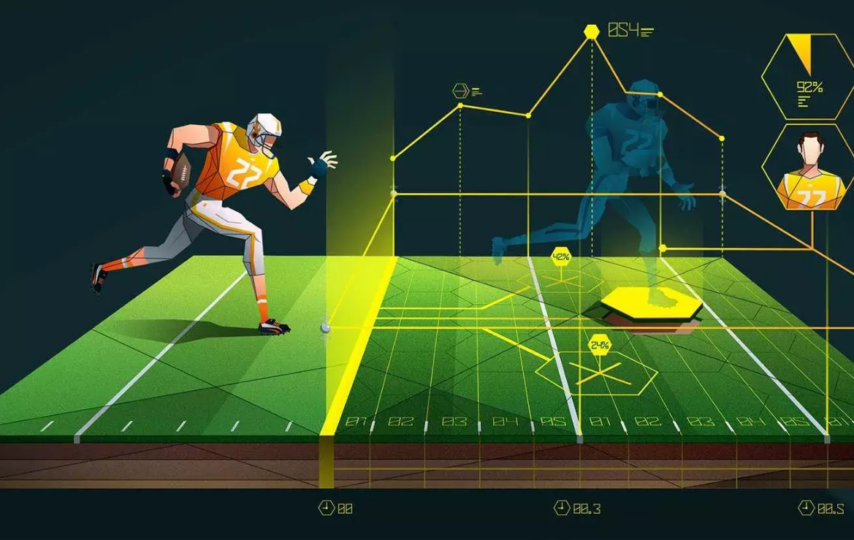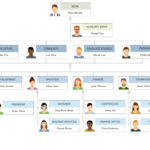Artificial intelligence (AI) and machine learning (ML) have revolutionized the field of sports analytics by enabling teams and athletes to leverage data for performance optimization. You can make yourself more marketable in a variety of professional settings by expanding your expertise in the aforementioned fields by enrolling in AI ML courses from a reputed institute. Artificial intelligence and machine learning technologies are finding increasing use in a variety of sectors, including healthcare, banking, manufacturing, transportation, and the entertainment industry.
Why are AI and ML algorithms so relevant?
Artificial intelligence and machine learning algorithms are able to extract useful insights, find patterns, and create accurate predictions by analyzing huge volumes of data. This can result in improved performance, strategic decision-making, and enhanced training methods. In today’s technology-driven environment, taking courses in artificial intelligence and machine learning can give several benefits and prospects
Both artificial intelligence and machine learning are sectors that are seeing tremendous expansion and significant demand for experienced personnel. If you have knowledge of artificial intelligence and machine learning, you can work as a data scientist, a machine learning engineer, an AI researcher, or an AI consultant. These jobs typically come with alluring compensation, dependable employment, and the opportunity to advance one’s career in a sector that is always undergoing change.
What are the important applications of AI and ML in sports analytics?
The following are some of the most important applications of AI and ML in sports analytics:
Analysing Player Performance:
AI and ML algorithms are able to assess individual player performance by analyzing a variety of player variables like speed, agility, strength, and technique. Coaches and trainers are able to discover areas of improvement, detect fatigue or injury concerns, and customize training programs to optimize performance by tracking and analyzing data from training sessions, matches, and wearable devices. Unlock Lucrative Opportunities: Gain In-Demand Skills at Our Web Developer Bootcamp!
Game Strategy and Tactics:
AI and ML algorithms can analyze enormous volumes of historical data to provide insights into the game strategy and performance patterns of opponents. This data can include team and player statistics, match footage, and scouting reports. This information assists coaches and teams in making judgments that are motivated by data in regard to game plans, lineup selections, and modifications made during the game itself.
Injury Management and Prevention:
Artificial intelligence and machine learning have the potential to assist in the prediction and prevention of player injuries by analyzing player movement patterns, workload, and biometric data. By identifying injury risk factors, teams can modify training programs, rest schedules, and player rotations to minimize the chances of injuries and improve player availability. AI and ML algorithms can be used to assist in talent discovery and recruiting by analyzing player performance data, scouting reports, and historical trends. This can be accomplished through the use of talent scouting and recruitment. By leveraging these algorithms, teams can identify promising players who may have been overlooked, assess their potential, and make informed decisions during the recruitment process.
Fan Engagement and Experience:
Artificial intelligence and machine learning have the potential to improve the fan experience by analyzing fan behavior data, interactions on social media, and preferences. Sports organizations are in a better position to boost fan happiness and loyalty if they customize their marketing strategies, create personalized content, and give immersive experiences if they have a better grasp of fan emotions and interaction patterns.
Analytics and Prediction of Performance:
AI and ML can forecast match results, player performance, and game-changing events by analyzing historical data and real-time inputs. These predictions can be made by analyzing data from previous matches. These predictions can help coaches and analysts make strategic decisions, game plans, and player substitutions based on the probabilities generated by the algorithms. These decisions and plans can be used to improve a team’s chances of winning.
Equipment and Gear Optimization:
AI and ML can analyze data from wearable devices and sensors embedded in equipment to optimize performance and safety. Teams are able to make data-driven decisions about the design of equipment, the modification of that equipment, and player-specific optimizations when they monitor aspects such as player load, impact forces, and technique.
Real-time Performance Monitoring:
Artificial intelligence and machine learning algorithms are able to process real-time data from sensors, cameras, and tracking devices in order to monitor player performance in real-time throughout training sessions and matches. The ability to receive real-time input on metrics such as speed, acceleration, heart rate, and positioning gives coaches and trainers the ability to make fast modifications and improve their athletes’ overall performance.
Video Analysis and Insights:
AI and ML can analyze video footage from matches and training sessions to extract useful insights. These insights can be used to drastically improve and enhance performance. By automatically tagging and annotating key events, player movements, and tactical patterns, coaches and analysts are able to quickly examine and analyze performance, discover strengths and weaknesses, and make data-driven decisions for improving the team’s play.
Injury Rehabilitation:
AI and ML algorithms can assist in injury rehabilitation by analyzing player biometric data, movement patterns, and medical records. Personalized rehabilitation programs can be devised to enable a speedier and safer return to play by measuring progress and determining optimal recovery protocols. These programs can be designed.
AI and ML algorithms are able to analyze training data, such as workload, fatigue levels, and recovery rates, in order to optimize training load and prevent overtraining. Teams are able to maximize their performance while simultaneously minimizing the danger of injuries and exhaustion if they have an awareness of the capacities of individual players and alter their training programs accordingly.
Analysis of Match Scenarios and Simulations of Matches:
AI and ML algorithms are able to model match scenarios and forecast the effects of a variety of tactical decisions. Coaches can use these simulations to evaluate different strategies, make informed decisions, and prepare the team for different scenarios they may encounter during matches.
Wearables for Sports Performance:
Artificial intelligence and machine learning have been accepted to play an important role in the analysis of data generated from wearable devices like smartwatches, fitness trackers, and GPS devices. These devices supply real-time data on player performance, biometrics, and movement patterns, which can then be analyzed by AI algorithms to deliver actionable insights for optimizing training and performance. These insights can be used to make improvements in both areas.
Sports Betting and Fantasy Sports:
AI and ML algorithms can analyze enormous volumes of data to assist with sports betting and fantasy sports predictions. This data can include player and club statistics, match results, and historical trends. These algorithms can make accurate predictions and recommendations based on the analyzed data, enabling users to make informed decisions and improve their chances of success.
Game Analytics and Performance Metrics:
Artificial intelligence (AI) and machine learning (ML) have the ability to develop advanced game analytics and performance metrics by analyzing data gleaned from a variety of sources. These measures can include ratings for player efficiency, analyses of shot selection and defensive impact, as well as others, and provide coaches and analysts with better insights into the performance of individual players and the team as a whole.
Summary:
The use of AI and ML within the realm of sports analytics has resulted in the opening of new doors regarding the optimization of performance, the making of decisions, and the engagement of fans. By leveraging data-driven insights, teams and athletes can gain a competitive edge, maximize their potential, and enhance the overall sports experience.
In essence, artificial intelligence and machine learning have the potential to revolutionize sports analytics by capitalizing on data to improve performance optimization, decision-making, and fan engagement. In today’s increasingly data-driven sports scene, the integration of these technologies gives teams and athletes a competitive edge that helps them win more games.








